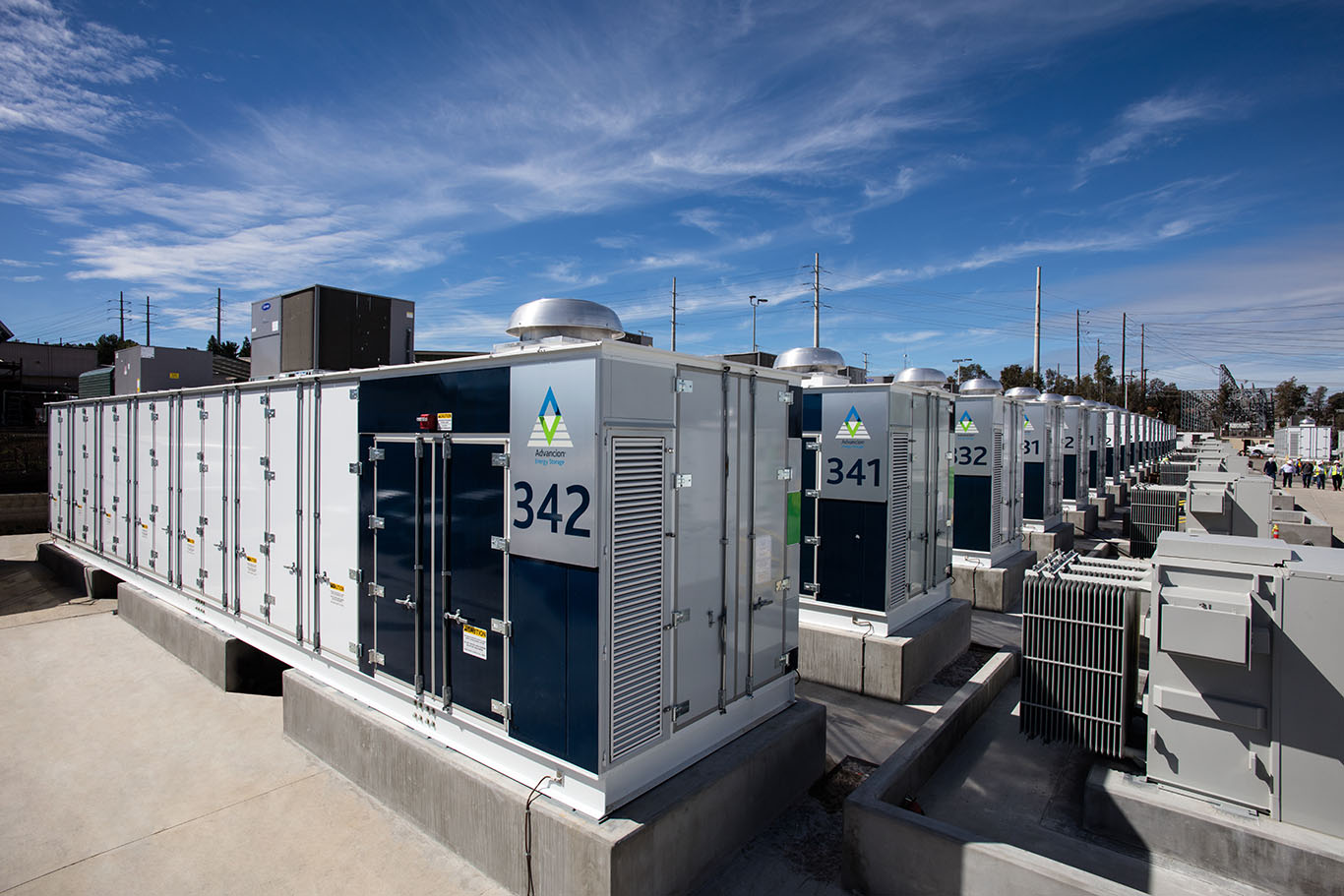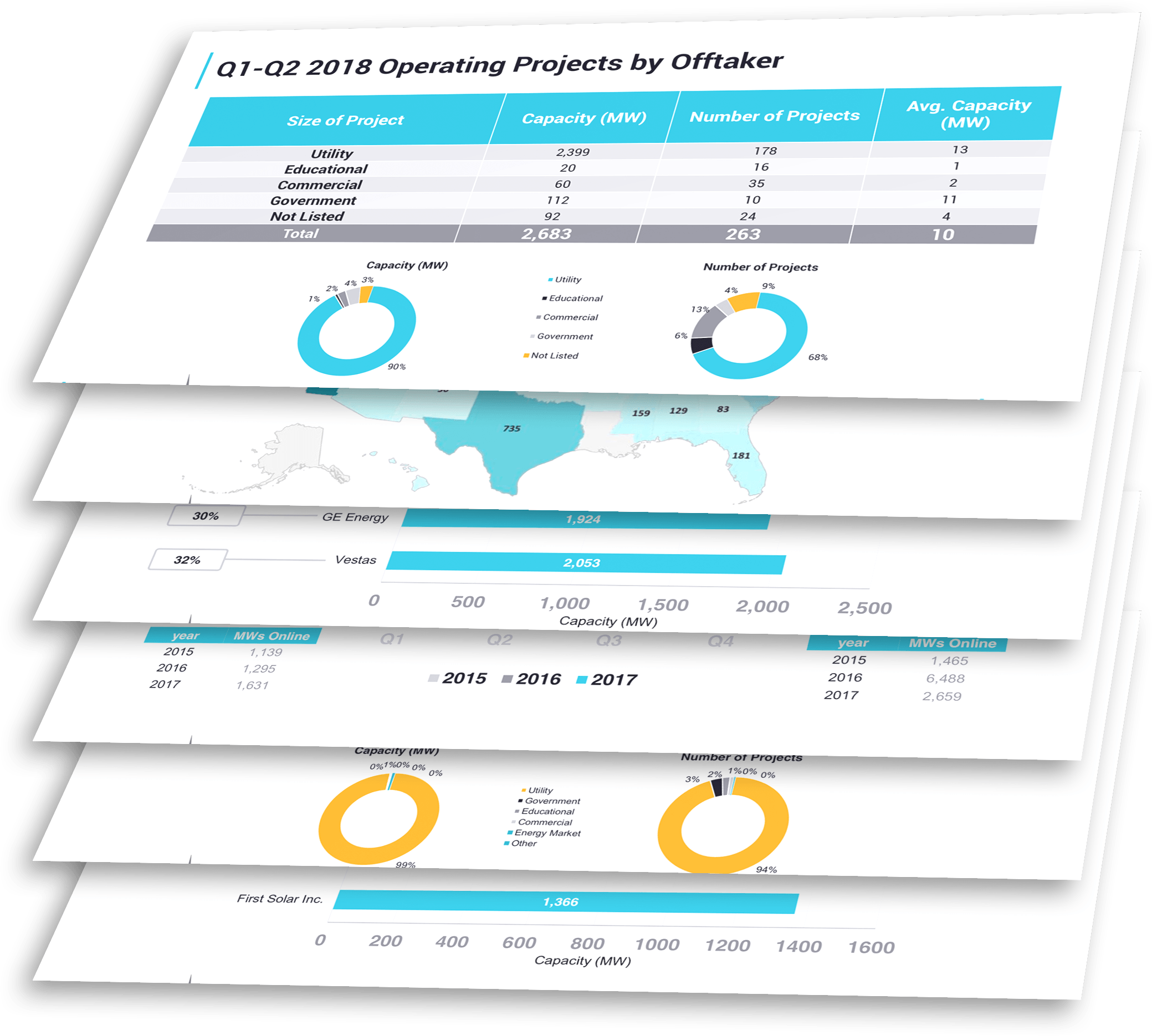Renewable Energy Storage
Renewable Energy Storage has been a trending topic for several years now and the industry does not show any signs of stopping. Major players in the industry have invested large amounts of resources and energy (pun intended 😏) into growth opportunities inside of the Energy Storage sector. In order to help identify the largest energy storage projects, we have compiled a list using Energy Acuity data to find the Top 10 U.S. Energy Storage Projects by Capacity (MW).
Top 10 U.S. Energy Storage Projects by Capacity (MW)
1.) Bath County Pumped Storage Station — Capacity(MW): 3,030.00
Status: Operating
This project consists of a 3GW Pumped Hydro storage plant in Virginia that pumps water to an elevated reservoir at night and lets it run back down to generate electricity during the day.
2.) Raccoon Mountain Pumped Storage Plant — Capacity(MW): 1,652.00
Status: Operating
The plant, which is on the Tennessee River about 6 miles west of Chattanooga, has four pump/turbine units that together would cover a football field. The 528-acre reservoir at the top of Raccoon Mountain holds about 60 million cubic yards of water behind a dam that is 8,500 feet long and 230 feet high (Figure 4). Deep below the lake’s surface, hundreds of feet below the mountaintop is the powerhouse. At times of low power demand, giant turbines pump water up to the reservoir at a rate of seven million gallons per minute. This huge energy storage facility gives TVA much of the flexibility it needs to balance supply and demand on its extensive system.
3.) Northfield Mountain Pumped Storage Hydroelectricity Facility — Capacity(MW): 1,080.00
Status: Operating
Located in Northfield, Massachusetts, approximately five and one-half miles up the Connecticut River from Turners Falls Dam, the 1,080-megawatt plant is entirely underground and does not depend upon the natural flow of the river for operation. Utilizing energy that is generated at nuclear and the more efficient of our fossil plants, water from the lower reservoir is pumped to an upper reservoir during periods of low power demand. The water is stored in the upper reservoir and then, at times of high electric demand, is released down a 1,100-foot-long pressure shaft to power a turbine generator and continues to the lower reservoir where it is stored until it again resumes its cycle to the upper reservoir.
The 20-mile stretch of the Connecticut River, extending from the dam at Turners Falls north to the Vernon Dam in Vermont, serves as the station’s lower reservoir.
The man-made 300-acre upper reservoir, 800 feet above the river, is capable of storing 5.6 billion gallons of water.
The underground powerhouse includes four large reversible turbines, each capable of pumping 27,000 gallons of water per second and generating 270,000 kilowatts of electricity. The powerhouse is accessible through a 2,500-foot-long tunnel. Seven hundred feet below the surface, the cavern is longer than a football field and higher than a ten-story building.
4.) Muddy Run Pumped Hydro Storage — Capacity(MW): 1,070.00
Status: Operating
The 8-unit power station provides 1,070 megawatts (MW) of electricity by damming the Muddy Run ravine from its mouth. The station’s output is critical to meeting the dynamic peak electricity demands on the area’s regional power grid on hot summer afternoons. To generate electricity, the water in the upper reservoir at Muddy Run is used to fuel the turbines, flowing into the Conowingo Pond, a 14-mile stretch of the Susquehanna River in Maryland. As electricity demand decreases, at night, the units are reversed and used as pumps to fill the upper reservoir for subsequent peak-demand periods.
Muddy Run has provided electric power to the regional transmission system since commercial operation began in 1966. At the time, it was the largest pumped-storage hydroelectric power plant in the world. The general plant configuration remains the same as the original construction, however, the turbines and generators have been recently refurbished.
5.) Bad Creek Pumped Hydro Storage — Capacity(MW): 1,065.00
Status: Operating
The Bad Creek Hydroelectric Station is a 1,065-megawatt pumped-storage facility located in Oconee County, eight miles north of Salem, S.C. The four-unit station began generating electricity in 1991, and is the largest hydroelectric station on the Duke Energy system. It is named for the two streams, Bad Creek and West Bad Creek, which were dammed to create the Bad Creek reservoir.
The Bad Creek facility utilizes two reservoirs (or lakes) to generate electricity: an upper reservoir and a lower reservoir. Water stored in an upper lake is released into underground power tunnels. The water rushes down the tunnels, driving huge turbines, which are underground at the base of a dam. The spinning turbines are connected to large generators, which produce the electricity. The water then flows through draft tubes into a lower lake.
A pumped-storage hydroelectric station uses the same water over and over again, making more efficient use of water resources. When demand for electricity is low, operators can refill the lake, as if they were “recharging” a battery. Using power from other generating stations, the generators act as electric motors spinning the huge turbines backward. This pumps water back up the power tunnels into the upper lake. Water is generally pumped back to the upper reservoir at night and on weekends.
6.) Burbank Water & Power Compressed Air Energy Storage — Capacity(MW): 1,000.00
Status: Operating
Burbank W&P is interested in developing a large-scale energy storage project through partnerships with other utilities in their regional grid, being most attracted to compressed air energy storage on the 1,000MW scale.
7.) White Pine Pumped Storage — Capacity(MW): 750.00
Status: Pre-Construction
On July 13, 2017, Gridflex Energy filed an application for a preliminary permit proposing to study the feasibility of the White Pine Pumped Storage Project to be located near the town of Ely in White Pine, Nevada.
Gridlex Energy proposed two alternative closed-loop pumped storage alternatives at the site: one sized to 250 megawatts (MW) and the other to 500 MW.
The 500-MW alternative would have an annual generation of 502,717 megawatt-hours (MWh).The 250-MW alternative would have an estimated annual generation of 547,500 MWh.
8.) Jocassee Pumped Hydro Storage — Capacity(MW): 710.00
Status: Operating
The four-unit Jocassee Hydroelectric Station is a 710-megawatt pumped-storage generating facility located in Pickens County, S.C. The facility works much like a conventional hydroelectric station, except that it can reverse turbines and pump back previously used water from a lower lake to store potential energy for later.
The Jocassee facility typically generates power during times of peak electric demand. In the Carolinas, peaks are usually on hot summer afternoons and cold winter mornings during the work week. Water power uses no fuel in the generation of electricity and so has very low operating costs.
9.) Fairfield Pumped Storage — Capacity(MW): 511.20
Status: Operating
The Fairfield Pumped Storage Facility utilizes four earthen dams and four penstocks that lead from the intake structure on the Monticello Reservoir to the powerhouse.
It is primarily used for peaking, reserve generation, and off-peak power usage.
10.) Lake Elsinore Advanced Pumped Storage (LEAPS) — Capacity(MW): 500.00
Status: Construction Suspended
LEAPS, the Lake Elsinore Advanced Pump Storage Project, is a proposed 500-megawatt hydroelectric facility. If approved, LEAPS would generate electricity by pumping water from Lake Elsinore to the upper reservoir when demand for electricity was low, where it would then be stored and released during periods of high demand to generate electricity when it is needed most.
Looking for detailed Energy Storage data? Request a Free Demo of the Energy Acuity Platform Today!
Energy Acuity (EA) is the leading provider of power generation and power delivery market intelligence. Founded in 2008, EA was built on the principle that essential energy market research could be conducted and presented more efficiently than the traditional third-party data providers.
EA’s unique approach merges primary research, public resource aggregation, web monitoring and expert analysis that is delivered through a simple, dynamic online platform. This allows our clients to focus on actionable information and win business over the competition.



